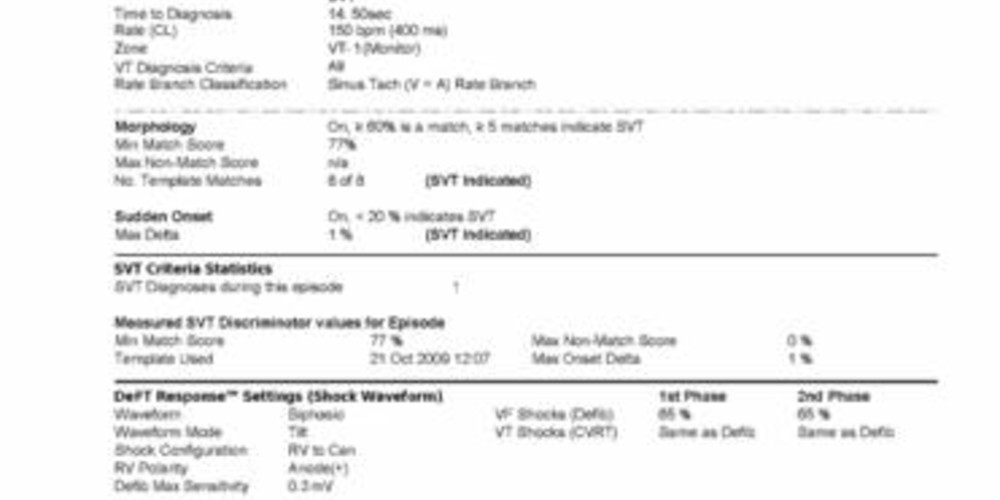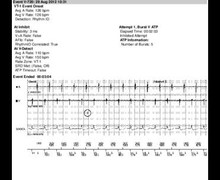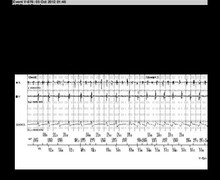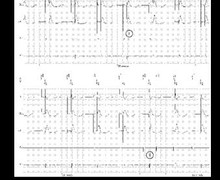Dual chamber discrimination: V=A
Tracing
Manufacturer Abbott
Device ICD
Field Discrimination
N° 48
Patient
A 41-year-old man suffering from advanced ischemic cardiomyopathy, recipient of a St Jude medical CRT-D implanted for secondary prevention of VT complicated by syncope, was seen for a routine follow-up.
Main programmed parameters
- VF zone at 222 bpm, VT-2 zone at 176 bpm, and VT-1 zone at 150 bpm
- 12 cycles in the VF zone, 12 cycles in the VT-2 zone and 12 cycles in the VT-1 zone were needed for the diagnosis
- Effective discrimination in the VT-1 and VT-2 zones
- V<A: if all criteria are fulfilled; morphology (60%, 5 out of 8), stability (50 ms, with 60-ms AV association delta, 12 intervals)
- V=A: if all criteria are fulfilled; morphology (60%, 5 out of 8), sudden onset (20%)

Graph and trace
Narrative
Episode diagnosed as SVT in the V=A arm; this patient requires 2 out of 2 criteria for the diagnosis of VT. Since both criteria point to SVT, the device diagnosed an SVT and no therapy delivered.
Tracing
- episode mode (DDI mode); tachycardia 1:1 with ventricular electrograms alternating between the sinus zone (VS), VT-1 (T1) or unclassified (-); the ventricular morphology favors SVT (close similarity with the ventricular reference);
- 4 consecutive VS or with intercalated unclassified cycles, which is insufficient to diagnose the return to sinus rhythm (programmed for 5 cycles);
- diagnosis of SVT in the V=A arm (= SVT) after 12 cycles classified T1 (10 are visible on the tracing: limitation of the EGM recording duration before the trigger); the pivotal cycle, which serves to determine whether sudden onset is present is not visible; the onset is considered gradual and morphology is also in favor of SVT;
- slowing of the ventricular rate and diagnosis of return to sinus rhythm (5 VS).
Other articles that may be of interest to you







This is an accurately diagnosed episode of sinus tachycardia. During sinus tachycardia, 2 out of 2 criteria typically point to an SVT, as the onset is gradual (SVT) and morphology is similar (SVT). Both programmed settings, “One of” or “All”, effectively discriminate VT from sinus tachycardia.
In young patients, whose chronotropic function is preserved, the most reliable discrimination of sinus tachycardia consists of avoiding an overlap of the VT zone and the zone that corresponds to physiologic rate acceleration during exercise.